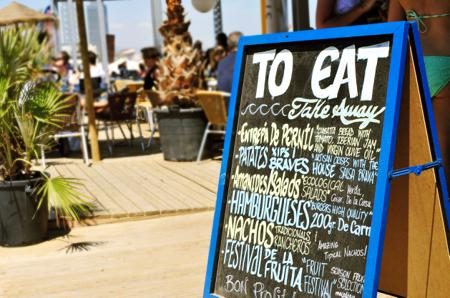【双11福利】2017年11月11日托福阅读考试真题回忆
- 2017年11月10日19:42 来源:小站教育作者:小站托福编辑
- 参与(12) 阅读(14358)
别人双11都在网购,你双11是不是还在考试呢?只有托福考试取得了理想的成绩,那么才能有好的心情去考试。2017年11月11日你参加了托福考试吗?2017年11月11托福考试考了哪些题目呢?小站教育老师为大家整理了完整的2017年11月11日托福阅读考试真题回忆,无论你是这天考试的筒子还是即将要参加托福考试的筒子,都一起来看看吧。
11月11日托福考试真题回忆汇总:http://toefl.zhan.com/tfziliao63871.html
2017年11月11日 托福阅读考题回忆
Passage One
学科分类:环境类
题目:Nitrogen In Crops
内容回忆:
第一段:为了了解人类能量的消耗情况,研究人员研发了一种测试体系, 可以测出人体各种元素含量。
第二段:该测试体系使用简单易操作的方法, 结合氮元素在特性, 通过燃烧食物, 之后减去蛋白质和灰质所剩余的部分来检测氮元素含量,从而也可以了解有多少能量被消耗了。
第三段:氮元素很难被利用,很多没法直接获得。
第四段:该测试体系还有不足,有进一步的研究的空间。
词汇题:
constraints on=limitations on
appropriate=suitable
sustain=continue
profoundly=deeply
Passage Two
学科分类:生物类
题目:Tree Species Identification in Tropical Rain Forests
内容回忆:
151115CN-P3
Tree Species Identification in Tropical Rain Forests
Identifying tree species in tropical rain forests may be harder than you think .Plant species identification can be difficult for all kinds of reasons even identification of trees ,which are big and conspicuous. For example, for some willow trees, both leaves and flowers may be needed for identification, but the two may not be present at the same time. Yet whatever problems may confront us in temperate climates, we can be sure that the tropics will pose far worse difficulties.
In tropical rain forests, the flowers of a given tree species are typically not in bloom and so cannot be observed. In seasonal rain forests (with a distinct wet season and a distinct dry season) ,many trees adjust their flowering to the rains, so flowering is to some extent predictable. But much rain forest (as in much of the Amazon region) is non seasonal, and trees may flower at any time. To be sure,different trees of the same species generally flower simultaneously ,for if they did not,they could not pollinate each other. 80 they must be responding to signals from the environment at large,or else (or in addition) they must be communicating with one another. But what those signals are is unknown,at least to us. To the human observer,the flowering seems random. In any case ,in a tropical forest (at least in a secondary forest ,which is forest that is regrowing after previous harvesting or clearance) , the trees grow very close together,and most are remarkably thin,like poles,and grow straight up and disappear into the gloom,twenty meters overhead. Even if there are flowers,you would not necessarily see them.
The leaves may not be accommodating either,at least when viewed from the ground. Rain-forest trees all face the same kinds of conditions and have adapted in the same general kinds of way. Rain forests are wet by definition. But in some there is a dry season ,and even when there is not,it doesn't rain all the time. Thus the forest floor may be moist,but the topmost leaves of the canopy are far above it and are exposed to the fiercest sun. 80 the uppermost leaves must resist desiccation (drying out). Yet from time to time,and in due season every day,they must also endure tremendous downpours. Leaves that can cope with such contrasts tend to be thick and leathery (to resist drought) ,oval in shape,and have a prection at the end known as a drip tip to let surplus rain run off the leaf. Many hundreds of trees from dozens of only distantly related families have leaves of this general type. But even if you can distinguish individual leaves,it is hard to be certain if they belong to the tree you are interested in or to the one next to itor to some epiphyte (a plant that grows on other plants) or liana (vine) slung over its branches. Often,in short,researchers must base their identification of a tree on the bark of its trunk. The trunks of tropical trees are sometimes highly characteristic ,being deeply furrowed or twisted ,but in most species the bark is simply smooth and gray,dappled with lichen and moss.
In a temperate forest you can be fairly sure that any one tree is the same species as the one next to itor,at least,it will be one of a list that is unlikely to exceed more than half a dozen (oak with ash in much of Britain; lodge pole pine with aspen in the northernmost reaches of North America ; alder, 8cotch pine,and spruce in the Baltic ; and so on). But in the Amazon in particular,you can be fairly sure that any one tree is not the same species as the one next to it. Often there is a third of a mile between any two trees of the same species ,and there can be up to 120 different species of trees in any one acre, 80 the task, often, is to identify an individual tree that may be not much thicker than your arm from the appearance of its bark, out of a totallist of several hundred (or thousand) possibilities which may well include some that have not been described before, so that there is nothing to refer back to.
1. The word conspicuous in the passage is closest in meaning to
A. close to each other
B. common
C. easily noticed
D. solitary
2. ln paragraph 1,why does the author discuss willow trees
A. To provide an example of a tree that is unusually large
B. To explain the process of tree species identification
C. To support the idea that tropical trees can be more difficult to identify than temperate trees
D. To demonstrate one reason why it can be problematic to determine what species a tree belongs to
3. Paragraph 2 implies which of the following about tree flowering in seasonal rainforests
A. It is less predictable than tree flowering in tropical rain forests
B. It results from an unknown means of communication between the individual trees of each species.
C. It is more useful to researchers trying to identify tree species than is the tree flowering in tropical rain forests.
D. It follows the same pattern that tree flowering follows in a tropical secondary forest.
4. In paragraph 2,why does the author discuss pollination
A. To provide evidence that in many tropical tree species flowering is at least somewhat predictable
B. To help explain why flowers on trees in tropical rainforests can be absent most of the time
C. To help explain why different trees of the same species bloom at the same time
D. To suggest one reason why trees might benefit from adjusting their flowering to the rains
5. According to paragraph 2,what is true about much of the Amazon region
A. It has tree species that adjust their pollination to rainfall.
B. It has not yet been harvested or cleared.
C. It has trees that typically flower during periods of rain.
D. It does not have separate wet and dry seasons.
6. The word endure in the passage is closest in meaning to
A. withstand
B. benefit from
C. avoid
D. respond to
7. The word surplus in the passage is closest in meaning to
A. heavy
B. steady
C. sudden
D. extra
8. Paragraph 3 an explanation for each of the following characteristics of rain-forest tree leaves EXCEPT
A. their having a drip-tip at the end
B. their thickness
C. their leathery texture
D. their oval shape
9. According to paragraph 3,what is one reason that looking at leaves may not be very useful when trying to determine the species of a rain-forest tree
A. Leaves of rainforest trees often look very different when they are wet than when they are dry.
B. Leaves that are exposed to the hot tropical sun dry out and lose their distinguishing characteristics.
C. It can be hard to determine whether a leaf has a drip tip or not.
D. It can be hard to determine whether a leaf belongs to a tree or to another plant growing on the tree.
10. According to paragraph 3,one reason that researchers in tropical forests must often rely on a tree's bark for species identification is that
A. distinct species of tree often have similar kinds of lichens and moss growing on their trunks
B. the leaves of many different tropical tree species are very similar to each other in appearance
C. many rainforest trees have neither epiphytes nor lianas
D. the bark of the trees is less affected by changes in light and moisture than leaves are
11. Which of the sentences below best expresses the essential information in the highlighted sentence in the passage Incorrect choices change the meaning in important ways or leave out essential information
A. Different temperate forests contain different combinations of tree species but in all such forests , all the trees of any one species are likely to be found close together.
B. Temperate forests rarely contain more than about six species of tree, and trees growing next to each other tend to be of the same species.
C. You can easily make a list of all the tree species that are likely to be found in temperate
forests, and if one tree is not on that list, you can be confident that the tree next to it will be.
D. Forests in Britain, in North America , and in the Baltic generally contain no more than half a dozen tree species , and all these species can be found on lists.
12. The word task in the passage is closest in meaning to
A. difficulty
B. job
C. strategy
D. requirement
13. Look at the four squares that indicate where the following sentence could be added to the passage.
As a result, the topmost level of a rainforest can be desert-like.
Where would the sentence best fit Click on a square to add the sentence to the passage.
14. Drag your choices to the spaces where they belong. To review the passage, click on View Text Answer Choices
A. In tropical forests different trees of the same species flower at different times so they are not able to pollinate one another.
B. Flowering in tropical trees is often unpredictable and when it occurs, the flowers themselves
tend to be too high up to be clearly visible.
C. Many tropical tree species have leaves that look very similar from the ground , and because the trees often grow close together, correctly matching a leaf with a particular tree can be difficult.
D. The leaves and bark of a single rainforest tree are often very different at different heights due to the need to adapt to different conditions, which adds to the difficulty of species identification .
E. Because trees in rain forests are spaced closely together, it is easy to tell whether neighboring
plants are the same species, but that is not much help in determining which species they are.
F. Often, a rain-forest tree has to be identified by its bark, but trees of like species are widely scattered , the list of possible species is very long, and many have similar-looking bark.
词汇题:
conspicuous=easily noticed
endure=withstand
surplus=extra
task=job
Passage Three
学科分类:生物类
题目:Coral Reef Communities
内容回忆:
140706CN-P2
Coral Reef Communities
Coral reefs are massive underwater structures made from the hard limestone exoskeletons of thousands of tiny living organisms (coral polyps) produced one on top of another in warm, clear, shallow ocean waters. Living polyps extend upward and outward from the coral colony center and live on top of the old dead exoskeletons. Coral reef communities are crowded with other animals representing virtually every major animal phylum. Space is at a premium on reefs, corals, seaweeds (various forms of algae), sponges, or other organisms cover virtually every surface. Because both corals and algae require light to survive, access to light, like space, is also a resource subject to competition.
Fast-growing, branching corals can grow over slower-growing, encrusting, or massive corals and deny them light. In response, the slower-growing forms can extend stinging filaments from their digestive cavity and kill their competitor’s polyps. Undamaged polyps on the faster-growing, branching coral, however, may grow very long sweeper tentacles, containing powerful nematocysts (stingers) that kill polyps on the slower-growing form. The faster-growing form repairs the damage and continues to overgrow its competitor. In addition to sweeper tentacles and stinging filaments, corals have several other mechanisms available for attack or defense.
In general, slower-growing corals are more aggressive than fast-growing species. In cases where a competitor cannot be overcome, however, corals may survive by taking advantage of differences in local habitats. Massive corals are generally more shade tolerant and able to survive at greater depths. Therefore, on many reefs it is the fast-growing, branching corals that ultimately dominate at the upper, shallower portion of the reef, whereas more massive forms dominate in deeper areas.
Corals also must compete with other reef organisms, each with its own strategies for survival. Sponges, soft corals, and seaweeds (algae) can overgrow stony corals and smother them. Algae are competitively superior to corals in shallow water but less so at depth. Survival of coral in shallow water, therefore, may depend on grazing by plant-eating echinoderms (starfish and sea urchins) and fishes. In Jamaica, overfishing removed most of the plant-eating fish from coral reefs. Initially, algal growth was kept in check by grazing sea urchins, but in 1982, a pathogen reduced the population by 99 percent. Without grazers, the algae were able to completely overgrow the coral.
Competition may occur among other reef communities. Grazing by urchins and fishes is important in preventing seaweeds from overgrowing the reef. The dominant algae on a healthy reef are usually fast-growing filamentous forms or coralline algae, well protected by calcification (hardening) and the production of noxious chemicals. These algae are inferior competitors to larger, fleshier seaweeds, so grazing by urchins and fishes on the larger seaweeds allows these algae to persist. Grazing on plants is greatest in the shallow reef areas but decreases with depth, where lower temperatures and light reduce algal growth. The reef is, therefore, a mosaic of microhabitats with different levels of grazing and different algal communities.
An additional complexity arises from the activity of damselfish. Because they are territorial, many damselfish species exclude grazers and other species from certain areas of the reef. Algae grow rapidly in these territories, providing habitat for many small invertebrates but overgrowing the corals. Branching corals tend to dominate in damselfish territories because they are upright and faster growing than the more massive or encrusting forms.
Although less studied than on rocky shores, predation almost certainly has a significant influence on the community structure of coral reefs. Fish and other predators may preferentially prey on such competitors of corals as sponges and gorgonians, giving competitively inferior reef corals an advantage in securing space. Many species of fish, mollusks, and crustaceans also feed directly on coral polyps. Several surgeonfish and parrotfish may actually pass coral skeletons through their digestive tracts and add sediment to the reef. Both fish and invertebrate corallivores (coral-feeding organisms) seem to attack faster-growing, branching species preferentially, perhaps preventing slower-growing forms from being overgrown. Corallivores, however, rarely ever completely destroy a coral colony except in cases where tropical storms or humans have already done severe damage. The fact that almost all small invertebrates on reefs are so well hidden or highly camouflaged is another indicator of how prevalent predation is on reefs and its importance in determining reef structure.
Paragraph 1
Coral reefs are massive underwater structures made from the hard limestone exoskeletons of thousands of tiny living organisms (coral polyps) produced one on top of another in warm, clear, shallow ocean waters. Living polyps extend upward and outward from the coral colony center and live on top of the old dead exoskeletons. Coral reef communities are crowded with other animals representing virtually every major animal phylum. Space is at a premium on reefs, corals, seaweeds (various forms of algae), sponges, or other organisms cover virtually every surface. Because both corals and algae require light to survive, access to light, like space, is also a resource subject to competition.
1. According to paragraph 1, all of the following are true of coral reefs EXCEPT:
¡ Coral reefs grow biggest in the deepest waters of the ocean.
¡ The organisms living around coral reefs compete for limited resources.
¡ There are many different organisms in coral reef communities.
¡ Coral reefs consist of the outer skeletons of small living organisms.
Paragraph 2
Fast-growing, branching corals can grow over slower-growing, encrusting, or massive corals and deny them light. In response, the slower-growing forms can extend stinging filaments from their digestive cavity and kill their competitor’s polyps. Undamaged polyps on the faster-growing, branching coral, however, may grow very long sweeper tentacles, containing powerful nematocysts (stingers) that kill polyps on the slower-growing form. The faster-growing form repairs the damage and continues to overgrow its competitor. In addition to sweeper tentacles and stinging filaments, corals have several other mechanisms available for attack or defense.
2. According to paragraph 2, how do fast-growing branching corals defend themselves from attacks by slower-growing corals?
¡ By producing stinging sweeper tentacles
¡ By growing on top of the slower-growing corals
¡ By blocking the light to the slower-growing corals
¡ By destroying the stinging filament of the slower-growing corals
3. The word "mechanisms " in the passage is closest in meaning to
¡ adaptations
¡ weapons
¡ parts
¡ means
Paragraph 3
In general, slower-growing corals are more aggressive than fast-growing species. In cases where a competitor cannot be overcome, however, corals may survive by taking advantage of differences in local habitats. Massive corals are generally more shade tolerant and able to survive at greater depths. Therefore, on many reefs it is the fast-growing, branching corals that ultimately dominate at the upper, shallower portion of the reef, whereas more massive forms dominate in deeper areas.
4. The word "ultimately " in the passage is closest in meaning to
¡ naturally
¡ eventually
¡ quickly
¡ clearly
Paragraph 4
Corals also must compete with other reef organisms, each with its own strategies for survival. Sponges, soft corals, and seaweeds (algae) can overgrow stony corals and smother them. Algae are competitively superior to corals in shallow water but less so at depth. Survival of coral in shallow water, therefore, may depend on grazing by plant-eating echinoderms (starfish and sea urchins) and fishes. In Jamaica, overfishing removed most of the plant-eating fish from coral reefs. Initially, algal growth was kept in check by grazing sea urchins, but in 1982, a pathogen reduced the population by 99 percent. Without grazers, the algae were able to completely overgrow the coral.
5. The phrase "kept in check " in the passage is closest in meaning to
¡ limited
¡ prevented
¡ allowed
¡ stimulated
6. In paragraph 4, why does the author discuss the effects of removing plant-eating fish and sea urchins from coral reefs?
¡ To identify a situation that contributes to the dominance of corals in shallow waters
¡ To demonstrate the importance of grazing on seaweeds for the survival of some corals
¡ To provide evidence that seaweeds are better competitors than coral at depth
¡ To argue that sea urchin pathogens also attack corals
7. According to paragraph 4, all of these pairs of organisms are in competitionEXCEPT
¡ corals and sponges
¡ algae and corals
¡ echinoderms and corals
¡ sea urchins and algae
Paragraph 5
Competition may occur among other reef communities. Grazing by urchins and fishes is important in preventing seaweeds from overgrowing the reef. The dominant algae on a healthy reef are usually fast-growing filamentous forms or coralline algae, well protected by calcification (hardening) and the production of noxious chemicals. These algae are inferior competitors to larger, fleshier seaweeds, so grazing by urchins and fishes on the larger seaweeds allows these algae to persist. Grazing on plants is greatest in the shallow reef areas but decreases with depth, where lower temperatures and light reduce algal growth. The reef is, therefore, a mosaic of microhabitats with different levels of grazing and different algal communities.
8. According to paragraph 5, fast-growing filamentous or coralline algae are usually the dominant algae on healthy coral reefs in part because they
¡ are not affected by noxious chemicals produced by other organisms
¡ are less attractive as food for sea urchins and fishes than bigger seaweeds are
¡ occupy the areas of coral reefs that have lower temperatures and less light
¡ can live in a wider variety of microhabitats than their competitors can
Paragraph 6
An additional complexity arises from the activity of damselfish. Because they are territorial, many damselfish species exclude grazers and other species from certain areas of the reef. Algae grow rapidly in these territories, providing habitat for many small invertebrates but overgrowing the corals. Branching corals tend to dominate in damselfish territories because they are upright and faster growing than the more massive or encrusting forms.
9. According to paragraph 6, which of the following is an effect of the activity of damselfish on the reef environment?
¡ Encrusting corals dominate in damselfish territories.
¡ The damselfish attract many species of grazers.
¡ Algae grow rapidly.
¡ Algal diversity is greater than in other parts of the reef.
Paragraph 7
Although less studied than on rocky shores, predation almost certainly has a significant influence on the community structure of coral reefs. Fish and other predators may preferentially prey on such competitors of corals as sponges and gorgonians, giving competitively inferior reef corals an advantage in securing space. Many species of fish, mollusks, and crustaceans also feed directly on coral polyps. Several surgeonfish and parrotfish may actually pass coral skeletons through their digestive tracts and add sediment to the reef. Both fish and invertebrate corallivores (coral-feeding organisms) seem to attack faster-growing, branching species preferentially, perhaps preventing slower-growing forms from being overgrown. Corallivores, however, rarely ever completely destroy a coral colony except in cases where tropical storms or humans have already done severe damage. The fact that almost all small invertebrates on reefs are so well hidden or highly camouflaged is another indicator of how prevalent predation is on reefs and its importance in determining reef structure.
10. The word "securing " in the passage is closest in meaning to
¡ looking for
¡ getting
¡ maximizing
¡ sharing
11. Which of the sentences below best expresses the essential information in the highlighted sentence in the passage? Incorrect choices change the meaning in important ways or leave out essential information.
¡ The presence of only very small invertebrates on a reef is an indication of widespread predation.
¡ Most reefs are structured in a way which allows small invertebrates to remain hidden or camouflaged.
¡ Almost all small invertebrates are hidden or camouflaged, indicating the extent and importance of predation to reef structure.
¡ Almost all of the small invertebrates on reefs are difficult to find because they are so highly camouflaged.
12. Paragraph 7 mentions all of the following as effects of predation on the community structure of coral reefs EXCEPT:
¡ Corals are advantaged when predators prefer to attack competitors or corals.
¡ Faster-growing corals are prevented from overgrowing slower-growing corals when faster-growing species are preferred by competitors.
¡ Predation contributes to the sediment deposit of the reef.
¡ Small invertebrates are exposed to competitively superior organisms.
Paragraph 3
In general, slower-growing corals are more aggressive than fast-growing species.
■In cases where a competitor cannot be overcome, however, corals may survive by taking advantage of differences in local habitats. ■Massive corals are generally more shade tolerant and able to survive at greater depths. ■ Therefore, on many reefs it is the fast-growing, branching corals that ultimately dominate at the upper, shallower portion of the reef, whereas more massive forms dominate in deeper areas. ■
13. Look at the four squares [■] that indicate where the following sentence can be added to the passage.
For example, different species of corals have different needs for light.
Where would the sentence best fit?
14. Directions: An introductory sentence for a brief summary of the passage is provided below. Complete the summary by selecting the THREE answer choices that express the most important ideas in the passage. Some answer choices do not belong in the summary because they express ideas that are not presented in the passage or are minor ideas in the passage. This question is worth 2 points.
Drag your choices to the spaces where they belong. To review the passage, click on View Text.
Coral reef communities include many different organisms that must compete for resources such as space and light.
●
●
●
Answer Choices
¡ In order to keep from being overgrown, the different species of coral kill each other’s polyps, or live in different local habitats within the reef community.
¡ Competition among the different species of corals is more intense than that between corals and other coral reef inhabitants.
¡ Predation shapes reef structure by getting rid of competitors of corals, but coral polyps themselves are also eaten, as are many reef inhabitants.
¡ Coral reefs are divided into a shallow upper portion and a deeper lower portion with branching corals dominating in the lower portion.
¡ Grazing by fishes and urchins prevents algae and seaweeds from overgrowing the corals, although damselfish exclude grazers from some areas.
¡ Fish and invertebrate corallivores are the most common cause of coral colony destruction, followed by tropical storms and damage by humans.
词汇题:
mechanisms=means
ultimately=eventually
kept in check=prevented
securing=getting
以上就是小站教育老师为大家整理的2017年11月11日托福阅读考试真题回忆,后面小编还会为大家整理完整的2017年11月11日托福阅读考试真题解析,大家一起学习一下,估算一下自己的得分以及预测一下接下来的托福考试动向。最后,小编预祝大家托福考试能取得理想的托福成绩。




































